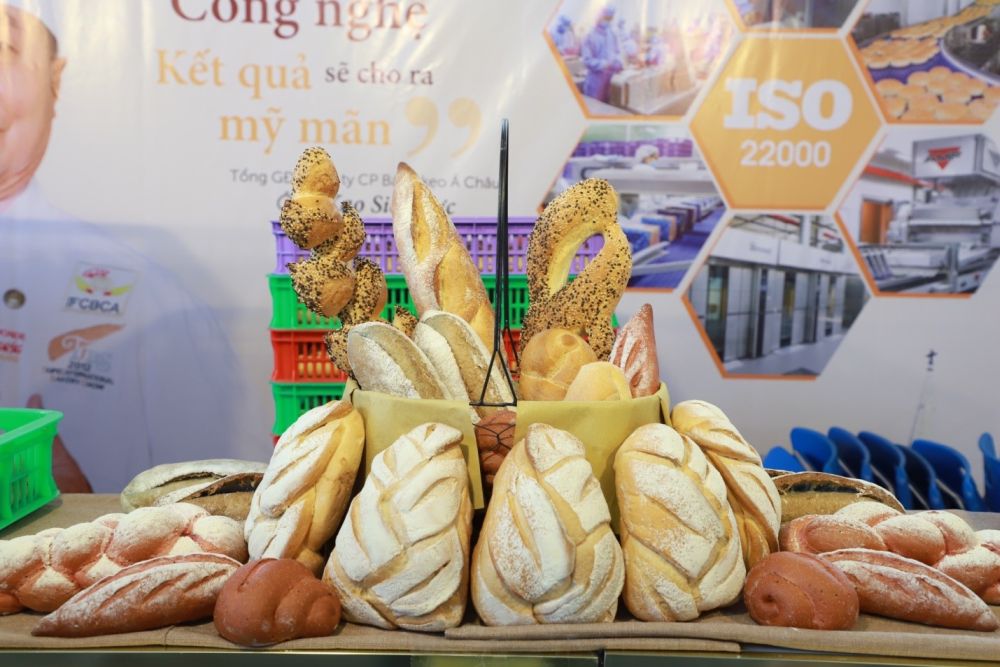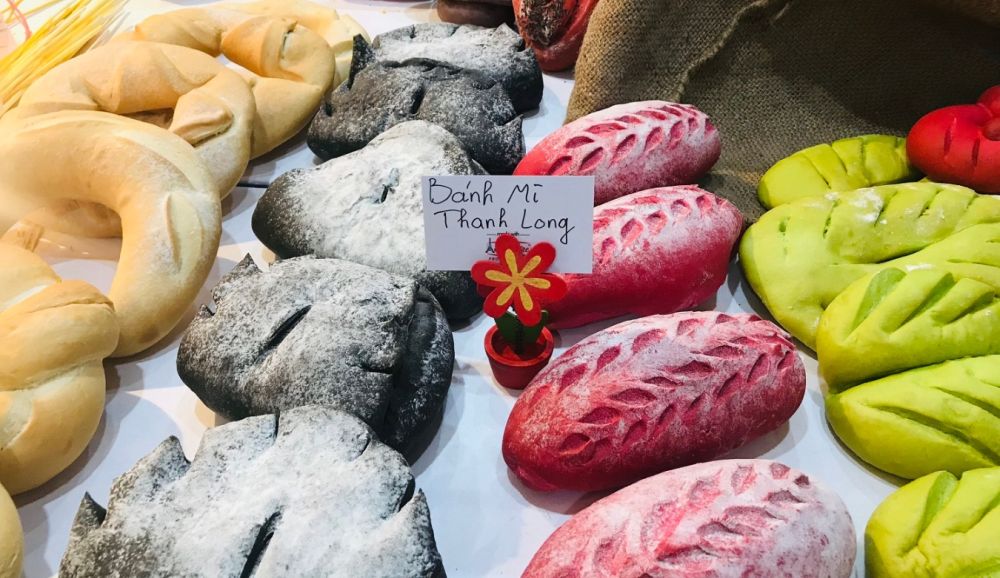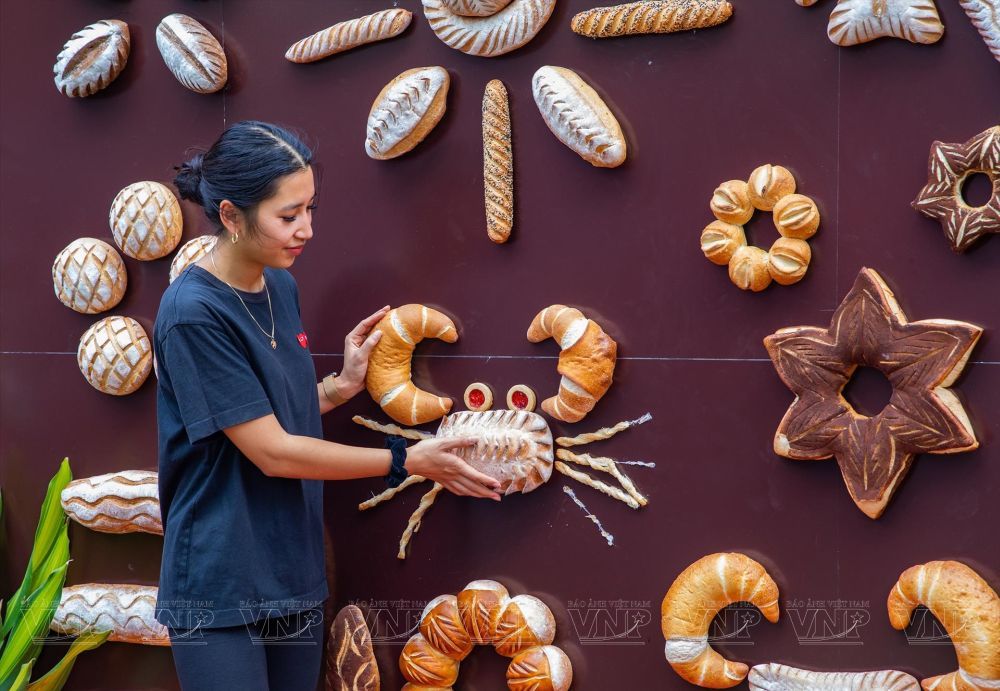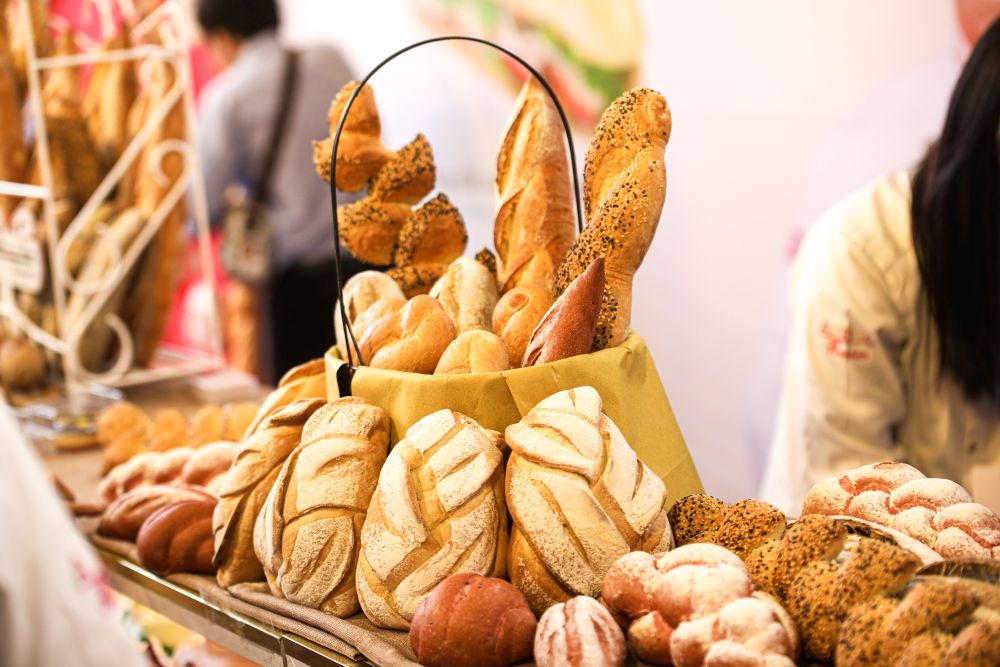
The 3-day festival in District 1’s Le Van Tam Park opened at 8 p.m. and is expected to welcome a total of 100,000 visitors through Sunday.
The festival features 131 banh mi pavilions showcasing the best Vietnamese baguette sandwiches that the nation’s top restaurants, bakeries and domestic and foreign suppliers have to offer.
Some 25% more eateries are participating this year compared to last year.
A giant six-meter-long loaf of bread displays 150 side dishes at the center of the event.
Buyers had to wait in long lines to taste the specialties of Ho Chi Minh City’s most famous long-standing sandwich shops.

Customers line up to try the unique Vietnamese snack served by Tuan 7 Keo, a 50-year-old stall that has become a local landmark made famous by its savory bread and meat combinations.
Shop owner Nguyen Thanh Tuan said the number of visitors at this year's festival has been far larger than last year's, “without being too overcrowded.”
Tuan's pavilion sold 300 sandwiches in just 4 hours.
Organizers expect 3-4 times more sandwiches to be sold over the course of the weekend. Last year, Tuan’s stall sold about 1,200 banh mi each day of the festival.

Tang brand’s sandwich stall was also crowded with customers, with nearly a dozen employees busy serving.
The shop was established in the 1950s and is most famous for its banh mi filled with grilled pate and steamed meatballs that sell for VND30,000-35,000 each.
On the first day, the stall sold about 800 banh mi, of which the Chinese-style pate shumai version was the best seller.

Laura and Emma from South Africa have been in Vietnam for 6 months, and both said they love Vietnamese sandwiches because they’re affordable and can be eaten any time of day.
They heard about the festival two weeks ago and had been eagerly awaiting opening day.
They are vegetarian so they ordered mushroom baguettes.

"The festival atmosphere is vibrant, and there are so many types of sandwiches I’ve never tried before," Emma (R) said. Some banh mi at this shop was made with gac (Momordica cochinchinensis), which gave them the red color.
